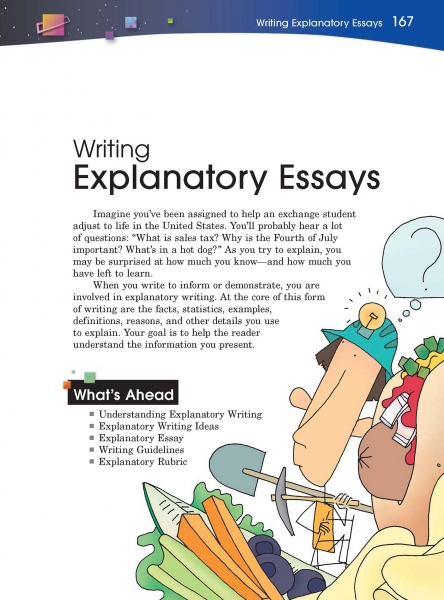Page 167 from

Start-Up Activity
Ask students to identify all the foods in the illustration on page 167. (Celery, lettuce, cucumber, carrots, olives, potato chips, hot dog, bun, onion, ketchup, cheese, scallions.) Which of those ingredients would they want to have with a hot dog? Which would they not want?
Tell them that when they create their explanatory essays in this chapter, they will gather all kinds of ingredients: facts, statistics, examples, definitions, reasons, and so on, and they will have to decide which to use and which to set aside. The question is, “Which details will do the most to inform my reader about my topic?”
Think About It
“The more minimal the art, the more maximum the explanation.”
—Hilton Kramer

Start-Up Activity
Ask students to identify all the foods in the illustration on page 167. (Celery, lettuce, cucumber, carrots, olives, potato chips, hot dog, bun, onion, ketchup, cheese, scallions.) Which of those ingredients would they want to have with a hot dog? Which would they not want?
Tell them that when they create their explanatory essays in this chapter, they will gather all kinds of ingredients: facts, statistics, examples, definitions, reasons, and so on, and they will have to decide which to use and which to set aside. The question is, “Which details will do the most to inform my reader about my topic?”
Think About It
“The more minimal the art, the more maximum the explanation.”
—Hilton Kramer


